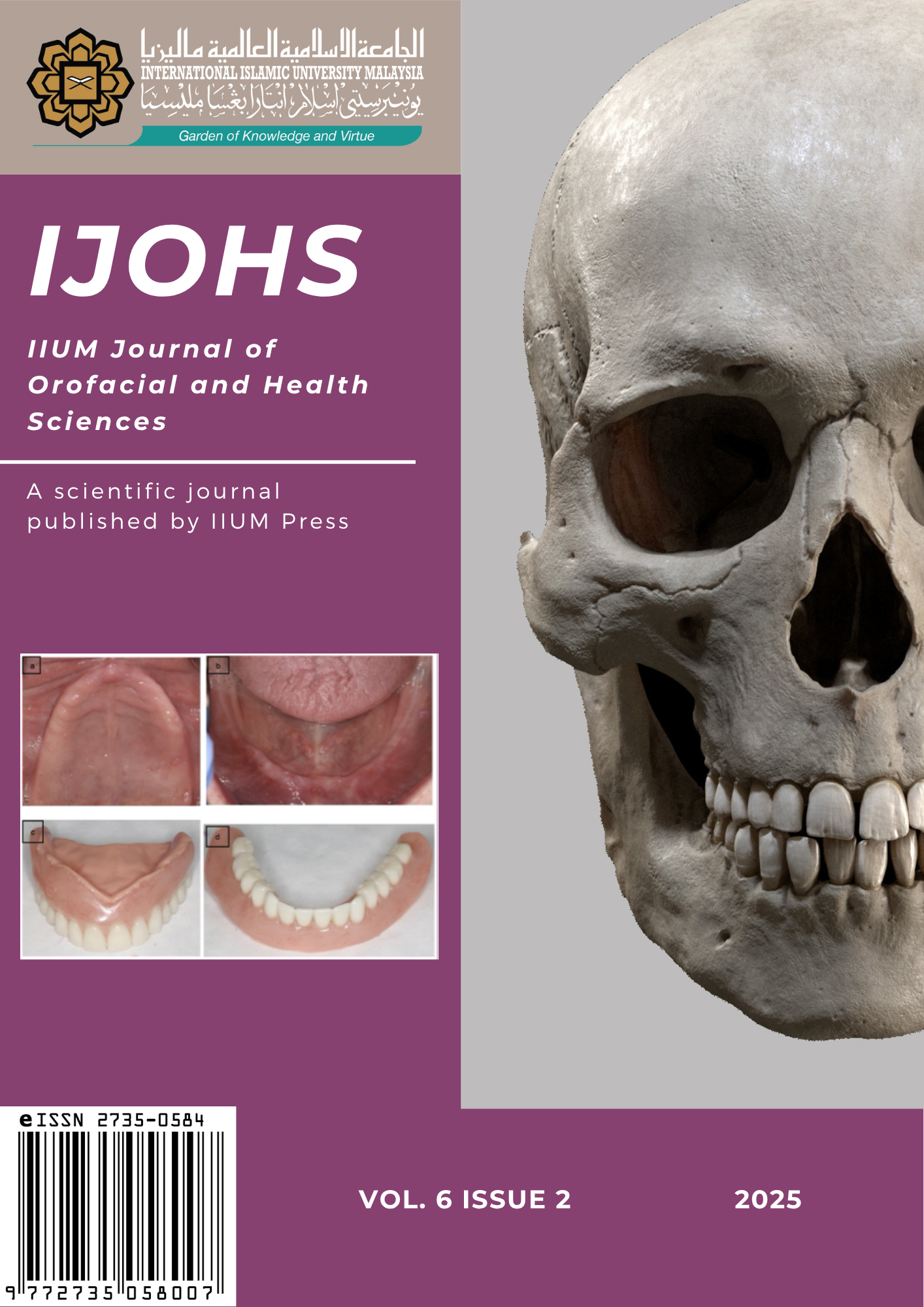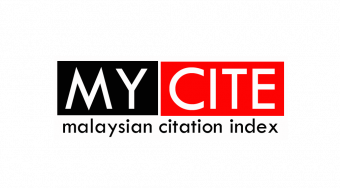Potential of Cananga odorata and Citrus limon essential oils in modulating NOTCH1 signalling for non-melanoma skin cancer treatment
DOI:
https://doi.org/10.31436/ijohs.v6i2.370Keywords:
Cananga odorata, Citrus limon, essential oil, NOTCH, skin cancerAbstract
Natural products have drawn increasing attention as potential therapeutic agents, particularly for their anticancer properties. Essential oils (EOs) from Cananga odorata (CO) and Citrus limon (CL) are well-known for their antibacterial and antioxidant activities, yet their ability to suppress skin cancer cell growth remains uncertain. Whereas NOTCH1 signalling pathway plays an oncogenic role in cancer development due to uncontrolled cell proliferation. This study evaluates the antiproliferative effects of CO and CL EOs on skin cancer cells by examining their impact on NOTCH1 gene expression and protein secretion. Human foreskin fibroblast (HFF-1) and skin carcinoma (A431) cell lines were treated with DMSO-dissolved cisplatin and varying concentrations (125, 250, and 500 ?g/ml) of CO or CL EO for 24 hours. Cellular morphology was observed under 20–40x magnification, while qRT-PCR and western blot analyses were conducted to measure NOTCH1 gene expression and protein secretion. In A431 cells, CO EO at 125 ?g/ml significantly downregulated NOTCH1 gene expression compared to untreated cells, with levels lower than those induced by cisplatin. In contrast, CL EO at the same concentration upregulated NOTCH1 gene expression. At higher EO concentrations, both CO and CL EOs exhibited effects similar to cisplatin, with increased NOTCH1 protein secretion, likely resulting from apoptosis or necrosis-associated membrane leakage. These findings underscore the potential of natural products, particularly CO EO as an anticancer agent via modulation of NOTCH1 signalling. Further studies are essential to unravel the precise mechanisms by which these EOs affect A431 cells, advancing their potential use in skin cancer therapy.
References
Al-Naggar, R. A. (2013). Practice of skin cancer prevention among road traffic police officers in Malaysia. Asian Pacific Journal of Cancer Prevention, 14(8), 4577–4581.
Ansary, T. M., Hossain, M. R., Komine, M., & Ohtsuki, M. (2022). Immunotherapy for the treatment of squamous cell carcinoma: potential benefits and challenges. International Journal of Molecular Sciences, 23(15), 8530.
Aster, J. C., Pear, W. S., & Blacklow, S. C. (2017). The varied roles of notch in cancer. Annual Review of Pathology: Mechanisms of Disease, 12, 245-275.
Bath-Hextall, F., Jenkinson, C.M., Kumar, A., Leonardi-Bee, J., Perkins, W., Cox, K., et al. (2013). Longitudinal, mixed method study to look at the experiences and knowledge of non melanoma skin cancer from diagnosis to one year. BMC Dermatology, 13, 1-10.
Borgonetti, V., López, V., & Galeotti, N. (2022). Ylang-ylang (Cananga odorata (Lam.) Hook. f. & Thomson) essential oil reduced neuropathic-pain and associated anxiety symptoms in mice. Journal of Ethnopharmacology, 294, 115362. doi:https://doi.org/10.1016/j.jep.2022.115362.
Borusiewicz, M., Trojanowska, D., Paluchowska, P., Janeczko, Z., Petitjean, M. W., & Budak, A. J. S. (2017). Cytostatic, cytotoxic, and antibacterial activities of essential oil isolated from Citrus hystrix. ScienceAsia, 43(2017), 96-106. DOI: 10.2306/scienceasia1513-1874.2017.43.096.
Fang, C. Y., Lou, D. Y., Zhou, L. Q., Wang, J. C., Yang, B., He, Q. J., Wang, J. J., et al. (2021). Natural products: potential treatments for cisplatin-induced nephrotoxicity. Acta Pharmacologica Sinica, 42(12), 1951–1969. https://doi.org/10.1038/s41401-021-00620-9.
Fitsiou, E., & Pappa, A. (2019). Anticancer activity of essential oils and other extracts from aromatic plants grown in Greece. Antioxidants, 8(8), 290. https://doi.org/10.3390/antiox8080290.
Frassinetti, S., Caltavuturo, L., Cini, M., Della Croce, C. M., & Maserti, B. E. (2011). Antibacterial and antioxidant activity of essential oils from Citrus spp. Journal of Essential Oil Research, 23(1), 27-31.
Gaafar, R. M., Mohasseb, R. N., Abd-Elbaseer, M. A., & Salem, M. L. (2022). Achillea santolina and Raphanus sativus extracts downregulated the expression of the developmental genes NOTCH1, SIX1 and WNT1 in colon and breast cancer cell lines. International Journal of Cancer and Biomedical Research, 5. https://doi.org/10.21203/rs.3.rs-1866472/v1.
Galvão, L. C. D. C., Furletti, V. F., Bersan, S. M. F., da Cunha, M. G., Ruiz, A. L. T. G., Carvalho, J. E. D., et al. (2012). Antimicrobial activity of essential oils against Streptococcus mutans and their antiproliferative effects. Evidence-Based Complementary and Alternative Medicine, 2012, 1–12. https://doi.org/10.1155/2012/751435.
Gellrich, F. F., Hüning, S., Beissert, S., Eigentler, T., Stockfleth, E., Gutzmer, R., et al. (2019). Medical treatment of advanced cutaneous squamous?cell carcinoma. Journal of the European Academy of Dermatology and Venereology, 33, 38-43.
Gordon, L., Olsen, C., Whiteman, D. C., Elliott, T. M., Janda, M., & Green, A. (2020). Prevention versus early detection for long-term control of melanoma and keratinocyte carcinomas: a cost-effectiveness modelling study. BMJ Open, 10(2).
Herman, A., & Herman, A. P. (2015). Essential oils and their constituents as skin penetration enhancer for transdermal drug delivery: a review. Journal of Pharmacy and Pharmacology, 67(4), 473-485.
Kang, C. H., Rhie, S. J., & Kim, Y. C. (2018). Antioxidant and skin anti-aging effects of marigold methanol extract. Toxicological Research, 34(1), 31–39.
Kim, H. J., & Hong, J. H. (2024). Multiplicative Effects of Essential Oils and Other Active Components on Skin Tissue and Skin Cancers. International Journal of Molecular Sciences, 25(10), 5397.
Kim, J. Y. S., Kozlow, J. H., Mittal, B., Moyer, J., Olenecki, T., & Rodgers, P. (2018). Guidelines of care for the management of cutaneous squamous cell carcinoma. Journal of the American Academy of Dermatology, 78(3), 560–578. https://doi.org/10.1016/j.jaad.2017.10.007.
Mohamed Abdoul-Latif, F., Ainane, A., Houmed Aboubaker, I., Mohamed, J., & Ainane, T. (2023). Exploring the potent anticancer activity of essential oils and their bioactive compounds: mechanisms and prospects for future cancer therapy. Pharmaceuticals, 16(8), 1086.
Montalvão, M. M., Felix, F. B., Propheta dos Santos, E. W., Santos, J. F., de Lucca Júnior, W., Farias, A. S., et al. (2023). Cytotoxic activity of essential oil from leaves of Myrcia splendens against A549 lung cancer cells. BMC Complementary Medicine and Therapies, 23(1), 139.
Mrani, S. A., Zejli, H., Azzouni, D., Fadili, D., Alanazi, M. M., Hassane, S. O. S., et al. (2024). Chemical composition, antioxidant, antibacterial, and hemolytic properties of ylang-ylang (Cananga odorata) essential oil: potential therapeutic applications in dermatology. Pharmaceuticals, 17(10), 1376. https://doi.org/10.3390/ph17101376
Murthy, K. C., Kim, J., Vikram, A., & Patil, B. S. (2012). Differential inhibition of human colon cancer cells by structurally similar flavonoids of citrus. Food Chemistry, 132(1), 27-34.
Nuning Rahmawati, Ika Yanti M Sholikhah,, Rohmat Mujahid,, Yuli Widiyastuti, Agung Endro Nugroho, Abdul Rohman,. (2024). Ethnomedical uses of Cananga odorata (Lam.) Hook. f. and Thomson in indigenous traditional medicine among Indonesia ethnic groups. Journal of Applied Pharmaceutical Science, 14 (9).
Osanloo, M., Ghanbariasad, A., & Taghinezhad, A. (2021). Antioxidant and anticancer activities of Anethum graveolens L., Citrus limon (L.) Osbeck and Zingiber officinale Roscoe essential oils. Traditional and Integrative Medicine, 333-347.
Othman, H. I. A., Alkatib, H. H., Zaid, A., Sasidharan, S., Rahiman, S. S. F., Lee, T. P., et al. (2022). Phytochemical composition, antioxidant and antiproliferative activities of Citrus hystrix, Citrus limon, Citrus pyriformis, and Citrus microcarpa leaf essential oils against human cervical cancer cell line. Plants, 12(1), 134.
Radzuan, H. M. (2020). The effect of obesogenic and inflammatory factors in regulating adipocytes lipid chaperone proteins: University of Nottingham. https://eprints.nottingham.ac.uk/id/eprint/59800.
Rafique, S., Hassan, S. M., Mughal, S. S., Hassan, S. K., Shabbir, N., Perveiz, S. et al. (2020). Biological attributes of lemon: a review. Journal of Addiction Medicine and Therapeutic Science, 6(1), 030-034.
Ranasinghe, R., Mathai, M. L., & Zulli, A. (2022). Cisplatin for cancer therapy and overcoming chemoresistance. Heliyon, 8(9), e10608. https://doi.org/10.1016/j.heliyon.2022.e10608.
Rashid, H. M., Mahmod, A. I., Afifi, F. U., & Talib, W. H. (2022). Antioxidant and antiproliferation activities of Lemon verbena (Aloysia Citrodora): an in vitro and in vivo study. Plants, 11(6), 785.
Rathinam, R., Ghosh, S., Neumann, W. L., & Jamesdaniel, S. (2015). Cisplatin-induced apoptosis in auditory, renal, and neuronal cells is associated with nitration and downregulation of LMO4. Cell Death Discovery, 1(1), 1-8.
Sancho-Martínez, S. M., Piedrafita, F. J., Cannata-Andía, J. B., López-Novoa, J. M., & López-Hernández, F. J. (2011). Necrotic concentrations of cisplatin activate the apoptotic machinery but inhibit effector caspases and interfere with the execution of apoptosis. Toxicological Sciences, 122(1), 73-85.
Sedky, N. K., Abdel-Kader, N. M., Issa, M. Y., Abdelhady, M. M., Shamma, S. N., Bakowsky, U. et al. (2023). Co-delivery of ylang ylang oil of Cananga odorata and oxaliplatin using intelligent pH-sensitive lipid-based nanovesicles for the effective treatment of triple-negative breast cancer. International Journal of Molecular Sciences, 24(9), 8392. https://doi.org/10.3390/ijms24098392.
Skin Cancers in Malaysia. World Life Expectancy. (2020). https://www.worldlifeexpectancy.com/malaysia-skin-cancers.
Su, J., Song, Y., Zhu, Z., Huang, X., Fan, J., Qiao, J. et al. (2024). Cell–Cell communication: new insights and clinical implications. Signal Transduction and Targeted Therapy, 9(1), 196.
Wang, M. M. (2011). Notch Signaling and Notch Signaling Modifiers. The International Journal of Biochemistry & Cell Biology, 43(11), 1550-1562. https://doi.org/10.1016/j.biocel.2011.08.005.












